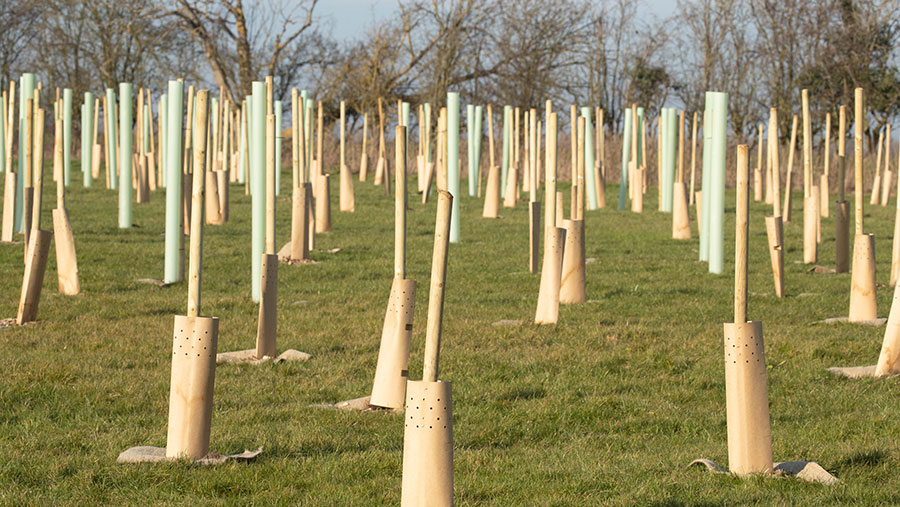Editor’s view: Three choices for Welsh on tree targets
 © Tim Scrivener
© Tim Scrivener “And how large is your wood?” was the constant refrain at the Royal Welsh Show this week.
It is remarkable how political the humble tree has become as it soars up politicians’ priority list, being seen as a proxy for progress on tackling what first minister Mark Drakeford referred to as the climate emergency.
As it stands, Welsh farmers will not qualify for the lowest tier of support payment in the Sustainable Farming Scheme (SFS) – due to launch in 2025 – without a minimum of 10% of each farm turned over to trees.
See also: Editor’s view: Coffey’s last stand should cheer farmers
Some exemptions are already confirmed, such as for tenants, but Welsh rural affairs minister Lesley Griffiths indicated that more may be to come as she endured a storm of criticism from farmers at the show.
But how much ground does she have to concede?
The Welsh government set a target to plant 2,000ha/year from 2020-30, having only managed 430ha/year in the previous decade.
In the last financial year it achieved 1,190ha – still a huge gap between its ambitions and reality.
In setting a target for each farm rather than the country as a whole, it says it is seeking to avoid wholesale land use change in certain areas.
On the face of it this is laudable. With an average Welsh holding size of 48ha, if the government decided to embark on large-scale planting in certain areas, just over 40 average-sized farms could be swallowed up each year.
Yet in seeking to encourage all farms to do it, including dairy and arable (those with the highest land values and output), it is dangling a seemingly tiny carrot.
While we don’t know what the payment rates will be, it is very unlikely they will be sufficient to compensate a Pembrokeshire dairy farmer, for example, for a decline in output and land value.
Several farmers said to me at the show this week that they felt national, rather than individual, planting targets would be better to avoid using the nation’s best farmland.
So if the government is to redouble its efforts to meet its target, will it have to weaken its commitment to avoid large-scale land use change, or find a bigger carrot – or large stick – to persuade those who are opposed to planting trees to comply?
It would seem easier for it to do the former, as those on lowland and upland beef and sheep farms are also the most reliant on area payments to keep their business viable.
Subsidies provide 88% of farm income on land designated a less-favoured area in Wales and they make an average net loss of £700 from agricultural activity.
Yet even as I consider the next moves, I can hear some of you thinking a third option is the only route – dilute the objective.
Now, I’m not saying it’s impossible for the Welsh government to renege on its commitment.
As we have seen with the Westminster battle over the ultra low emission zone targets in London, the closer we get to the deadline for implementing lofty environmental goals, the more challenging they become politically.
But I would always caution against only arguing for your preferred outcome when it is not the most likely one.
As it stands, this is happening – and very soon.
All Welsh farmers would do well to consider exactly whether and how they can change their business to survive if they do choose to go without the SFS.
As for the Welsh government – it will have to decide if it is comfortable with the fact that the price of meeting its green goals is punching more holes in the delicate fabric of rural communities.

